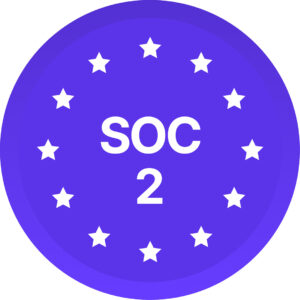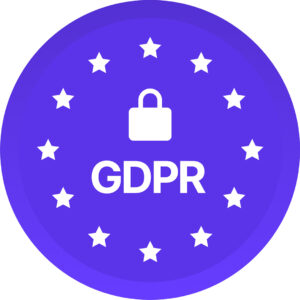More and more organizations are striving to become more diverse, building a workforce with a wider range of backgrounds, perspectives, and ability levels. Diversity and inclusion in the workplace means building a company with team members that represent society at large.
However, simply hiring more diverse employees does not actually ensure diversity and inclusion at work. To achieve diversity inclusion in the workplace, companies need to do more.
Difference Between Diversity and Inclusion at Work
Some people might be asking, “what is diversity and inclusion in the workplace?” Recent years have shown that simply protecting employees from discrimination, or even enacting diversity quotas, does not necessarily result in a more inclusive workplace. In fact, there are distinct differences between diverse workplaces and inclusive workplaces. Let’s look at the distinction:
Diverse Workplaces. Diverse workplaces have a heterogeneous mix of employees. A diverse workforce has employees of different ages, genders, languages, ethnic origins, cultural backgrounds, sexual orientations, family statuses, religions, etc. Diversity is measured by assessing the characteristics that employees share, and the characteristics that are different. Ideally, the composition of the workforce in a company resembles the composition of the culture and society in which it does business. For example, a company may aim to employ 50% women in order to reflect the gender balance in the community or society at large.
Inclusive Workplaces. An inclusive workplace has two key factors that distinguish it from merely a diverse one:
- Diversity is reflected in all areas of the company. We are all familiar with certain stereotypes, which continue to perpetuate themselves in the workplace. For example, the C-suite and board members are all white men, administrative and support personnel are all women, STEM employees are all male, etc. An inclusive company has a diverse and inclusive workforce at all levels and in all functional areas, so executives and board members are diverse, tech and R&D groups are diverse, support and service staff are diverse, manual labor teams are diverse, etc. Incorporating diverse employees throughout the organizational structure ensures that diverse employees have input and authority, and are fully included, at every level of decision-making.
- Diverse perspectives are considered. In an inclusive workplace, care and consideration are given to the needs and concerns of all employees. For example, workspaces may be designed to suit employees of different physical ability levels. Company gatherings and holidays may consider the needs of employees with diverse religious beliefs. The company considers the perspective of diverse employees, even if those employees don’t happen to be in the room.
Why is Diversity, Inclusion in the Workplace Important?
Many companies seek to become more diverse in order to attract employees and win their loyalty. Some embrace their diversity and inclusion workforce as part of their marketing and public relations strategy. Still more simply want to gain the benefits of increased sales, productivity, and profits of diversity inclusion in the workplace.
However, businesses cannot gain the benefits of having diverse employees unless those employees are actually empowered to fully participate in their jobs. It is only when diverse employees have a meaningful impact on workplace decisions, business processes, and company culture, that the company benefits from the different perspectives and creative solutions that diversity and inclusion at work enables.
How Can Businesses Ensure Diversity and Inclusion in the Workplace?
Every business needs to approach diversity inclusion at work in a way that works best for their organization. However, there are several specific ways to begin creating a more inclusive workplace. Here are some ways to get started:
- Review your existing processes. Many companies have existing anti-discrimination policies, diverse and inclusive mission statements, or use software to reduce unconscious bias in the hiring process. However, research indicates that up to 75% of these policies are ineffective, with superficial language that fails to actually create an inclusive workplace. If your business has these kinds of policies and practices, are they meaningful and impactful? Are employees living these values every day?
- Gather data. Data can often reveal hidden biases and weaknesses in a diversity strategy. Analyze your company’s leadership and key decision-makers, influential teams and work areas, and the overall composition of the workforce. Gather historical data of what kind of employees typically receive raises and promotions, looking for pay gaps and inequality of opportunity in your company.
- Seek training. There are many different types of professional D&I training designed to help companies become more diverse and inclusive. You might seek specialized training for staff involved in recruitment and hiring, or for company leadership and managers. You might also conduct workshops with existing employees, or integrate D&I training into your new hire and onboarding procedures.
Building a diverse and inclusive workforce doesn’t happen overnight. For most companies, it can be a slow process of increasing self-awareness, learning new communication tools, and building trust. But the rewards are (almost) limitless.
How Can Diversio Help?
Diversio is a woman-owned, people-first organization that specializes in helping businesses build a diversity and inclusion workforce. Our groundbreaking analytics tools gather crucial insights about your workforce, assess crucial risk factors, and create custom metrics that make your diversity strategy measurable and meaningful. We offer bespoke training and toolkits that support comprehensive diversity and inclusion programs in the workplace. Diversio’s cutting edge platform can help you diagnose and solve diversity and inclusion issues in your workplace. Contact us today to learn more.

